
To simply sit and look
An interview with Karina Vissonova, sustainable design researcher and creative thinker
12/11/2018
Karina Vissonova is a one-man band. To wit, she: has a PhD from the Royal Danish Academy of Fine Arts, in the field of Philosophy of Design with a focus on Sustainable Design (2016); is a product developer, design researcher, and creative thinker with over 20 years of experience; and has managed and collaborated in game-changing Research & Development, education, community development and multidisciplinary design projects, all of which have involved working with a wide range of businesses, producers of goods, architects, engineers, designers and entrepreneurs. And last but not least, in April 2018 she founded the Institute of Advanced Design Studies, a non-profit in Budapest, Hungary that offers advanced post-graduate education in design. With a full study programme slated to begin in 2020, it is a one-year multidisciplinary, theme-based programme that will examine how scientific and technological discoveries can be best applied to benefit humanity and the environment.
Another of her present occupations (‘alongside her husband’, as she states on her website) is running their winery, its vineyards, and a home restaurant. They created their vineyards in 2014, in western Hungary by Lake Balaton. Vissonova is also a practicing permaculture gardener and grows the vegetables and herbs for their restaurant herself.
At the closing end of this past summer, Vissonova was invited to lecture at the MAD International Summer School of Design 2018, which was held at Sigulda Castle in Latvia. Arterritory took advantage of Vissonova’s visit to talk to her about what is sustainable design and what it entails, as well as what other special interests she’s involved with besides her professional design activities.

Karina Vissonova at the MAD International Summer School of Design 2018
I looked at your website in preparation for our meeting, and I saw that you’ve written a lot about what sustainable design means. Given that the word ‘sustainable’ is defined as able to be maintained at a certain rate or level, with ‘rate’ referring to time, what is the length or range of time that is being assumed when we talk about ‘sustainable design’? And are there any time limits?
We evaluate sustainable design by looking at its side effects. The more attention we give to the side effects of design – or rather, to the minimising of side effects – the greater the design’s sustainability. As Western-thinking individuals, we believe that sustainable design is created so that it will work in the future – whether that is tomorrow, after several years, or decades from now. Sustainable design does not have an expiration date or time limits. The more side effects a design produces, the more unsustainable it is.
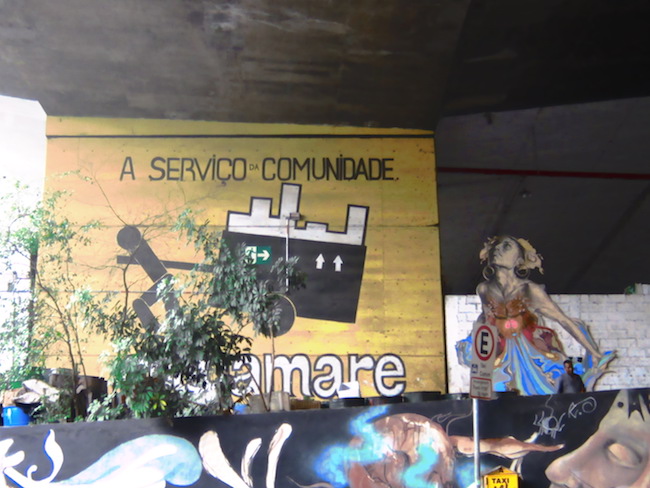
Project Club of Helsinki. Photo: Karina Vissonova
Taking into account that you’ve been working in this field for more than 20 years, how has sustainable design changed in that time frame?
A noticeable change is that people are more aware of ecology. For example, an ever-increasing number of people no longer use plastic shopping bags. A move towards so-called ‘green energy’ has been observed, but that is not all that clear-cut. On one hand, we’re protecting the earth by using alternatives to oil and coal, but we’re still ripping minerals and precious metals out of that same earth. We don’t know how much is left or what the consequences will be; we don’t even talk about it. I’ve read that the world’s reserves of silver will run out in twenty years.
I recently saw a very strange new invention – the replacing of plastic bottles with edible water balloons. By using new materials, are we creating new kinds of pollutants with unknowable consequences? Something new is being created, but is it indisputably better for us, better for the planet?
Exactly. I’ve always been a rather abstract thinker; I look at human inventions as machinery. We work on it, move forward, and come up with new solutions, but it still is a massive production process. Unimaginable numbers of things are being created, and many of it is unnecessary. We are human beings, we are emotional entities – we suffer and we love. We must understand that this emotional being does not need things and objects to be happy. We need more love, more touching, smiles, and, most importantly – to be warm, dry, fed and healthy. Then, of course, arises the question of what kind of resources are required for a person to be healthy. Who will control all of this? Can people be restricted or not? I know a growing number of people who are using the ‘exclusive opportunity’ to go on holiday to natural places – without telephones or technology – in order to undergo a kind of digital detoxification. If the amount of people doing this kind of thing are increasing, it means that people’s perceptions are still changing, and they want to return to themselves as emotional beings.
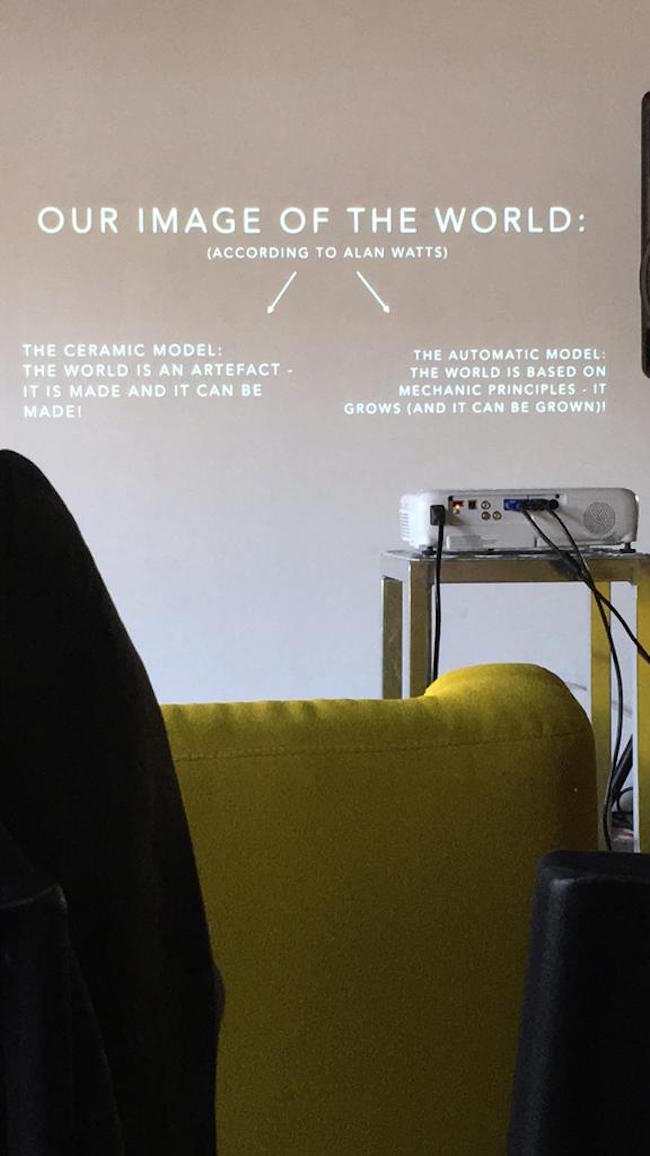
Budapest Design Week. Photo: Karina Vissonova
I was watching a science programme on the creation of the Earth – about the Big Bang and how Earth was formed due to a mistake. Do you think that sustainable design solutions often come about from unwitting accidents or mistakes?
Thank you for that question – it hits the nail right on the head. We tend to think that design is a very effective process with completely absolute solutions: a designer sat down, thought about it, invented it, and then began to produce something that everyone accepted, used, and deemed necessary. But now we see the side effects and understand that perhaps it really wasn’t necessary. We are like a social experiment – we accept things without knowing what they are. Speaking about chaos, that’s why a human being is a human being – he or she is both bad and good, both tired and happy. We are emotional beings, and the things that we create are created in a setting of chaos. Inspiration hits, and new materials are invented. I think that absolutely everything happens because of some mistake. That many sound a bit radical, but don’t get me wrong – I don’t think that everything is a mistake, but I do think that we need to remind ourselves that we are human, and that everything in the world should be created with a clean conscience and by thinking about that which is beautiful.
Except that due to technology, we’re making everything by machine. To be able to not use technologies for a week is, as you said, an exclusive opportunity, yet it is questionable that it will become the norm. Even virtual reality has become so life-like that at times it is hard to discern the real from the fake. I don’t think that sustainable design should become like that, because it is taking us away from what makes us human.
Yes, that’s true, but I’ll tell you about an interesting project. Have you heard about The Venus Project? A group of Canadian scientists, led by Jacque Fresco, have developed a unique international project for a future civilisation on Earth – one that provides a fresh and alternative vision of a new society and environment that has no element of civilisation’s previous social systems. Modern technologies play a huge role in this project. This project proposes that we can live in total happiness and prosperity by having technologies and robots doing everything – we just have to create a goal. Of course, it sounds utopian – no one will have to work and there will be no commerce or exchange, because if everyone has everything, there is no reason to barter. It’s an interesting theory. I’m not saying that it will work; I’d like to study it more and see whether it is even feasible. I’ve begun writing a new book in which a separate chapter will deal with this subject.
The other extreme is biocentrism (which can also be called eco-facism), meaning that humans are locked out of nature: all living things have inherent value – they are not just a resource for humans to use.
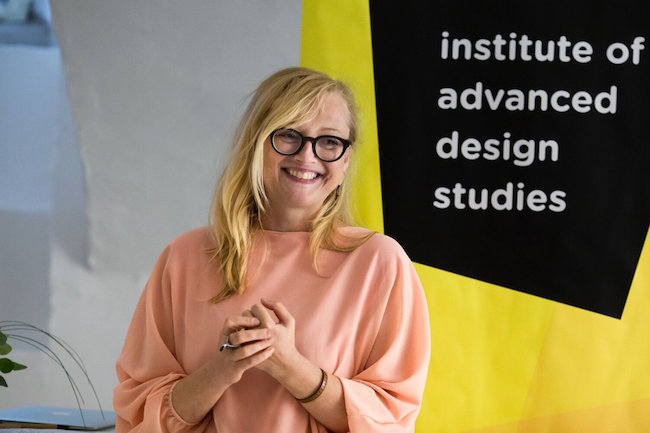
At the opening of the Institute of Advanced Design Studies. Photo: Alexandra Heim
When did you become aware of yourself as a conscious, thinking being?
Very long ago, in childhood. I asked all sorts of question that no one would answer for me. In first grade, I wished that my future self would create a bomb that would blow up everything that is material, and that only humans would be left. That’s a rather strange idea for a child to come up with, don’t you think? I’ve been a big biophile since childhood. Once I grew up, I understood that my ideas can be useful to others.
Was design the precise platform through which you wanted to develop your thinking?
Yes, the philosophy of design. When I was in business school in Copenhagen, we had a course in innovation – market sociology and the philosophy of technology. I was really taken with these ideas – the variety of ways in which product development can be observed and thought about. When thinking of how I came to have such a successful career, I understood that the reason behind it is my different way of thinking.
Why did you choose to study in Denmark?
Love took me there.
Did things turn out well?
No; we separated immediately, but then again, it’s where I met my current husband. From that point of view, I’d have to say that everything did indeed turn out well [smiles].

Karina Vissonova and her husband next to their vineyard - PAP wines. Photo: Alexandra Heim
I read that you and your husband have a vineyard.
Yes, in Hungary, in the country’s volcanic hill region on the northwest shore of Lake Balatona. High-quality wines are produced in this region. We fell in love with Saint George Mountain, but not because of the wonderful views (even though they are fantastic) but because it is such a singular place. If someone told me that the place has some sort of special energy fields or esoteric mysteries going on, I would absolutely believe them. We decided that we wanted to do something additional in life, so why not make wine? [Smiles]

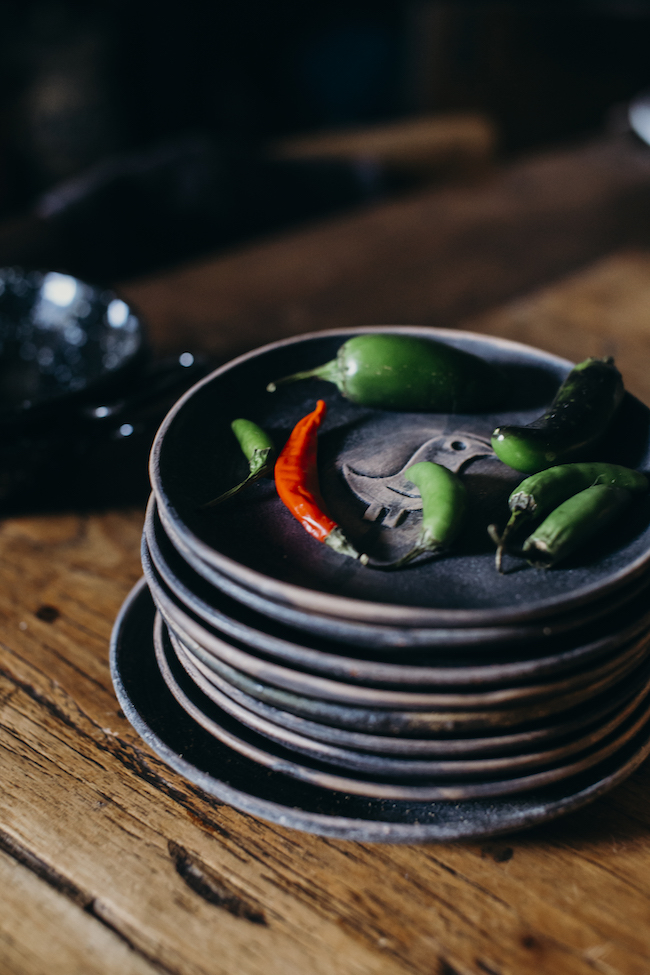
Photos from the restaurant in Hungary. Photo: Alexandra Heim
Is the upkeep of a vineyard linked to a presence of sustainable design?
I think it is. Even if only to understand how farming works. I also do gardening. When thinking about the garden and the vineyard, one has to think further than just a few years into the future. For instance, we have a 25- to 30-year plan for our vines – how they will develop, how they will look, what side effects will we face. We also have our own restaurant, and you have to think about these things when running that as well.
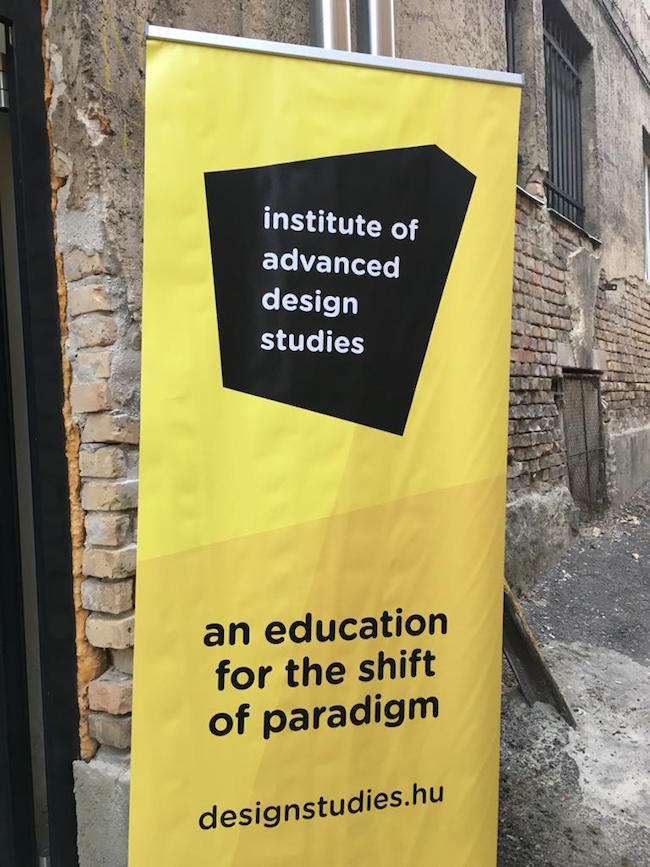
You’ve established an institute of design in Hungary. What sets your school apart from other sustainable design schools and ways of thinking?
The idea for an institute of design came to me nine years ago. The basic idea was to create an educational platform containing several disciplines. I also wanted to create a course that, after finishing it, the student – be it an engineer, philosopher, designer, businessperson, etc. – could work with individuals to create a better situation for others. We are a non-profit organisation; everything we earn is put back into education. We’re different from others in that we don’t concentrate on problem solving but more on creating the kind of environment that stimulates methods of thinking.
What is it like to be always thinking?
[Laughs] Good question. If I were alone in the world, things would be very good. But I have a husband, and I have responsibilities. Sometimes I think that I don’t have room for any more thoughts in my head, but apparently it is an inexhaustible resource. My head is full of thoughts, feelings and ideas. I often feel tired of life. I’m a very happy person, but I’m tired. [Smiles]
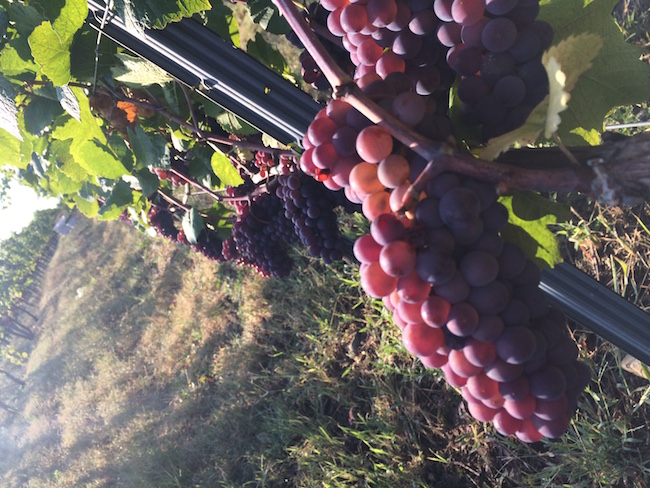
Photo: Karina Vissonova
What helps you ‘switch off’ the thinking process?
A good wine. [Laughs]
That could actually lead to even more thinking.
It can. But after tension-filled days and weeks, I really like to look in the distance, at the stars...with a glass of good wine, and simply be. I’m slowly learning to do that. To not fritter about or busy myself with something else, but to simply sit and look.
Is there any subject that has nothing to do with design?
Yes – love, family, nature. But, of course, that can be stretched like a rubber band because everything that has a practical end result can be likened to design. Design is both the process and the result. There can be a process that doesn’t end with a concrete result or object, but it still is design.
What gives you a feeling of gratification?
Writing puts me in my element. I’m not saying I’m a great writer, but I do get a sense of gratification if I can verbalise my thoughts and put them down on paper.
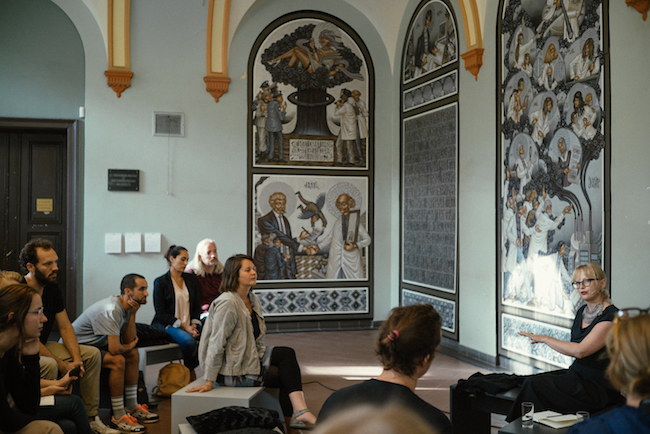
At the RIBOCA International Biennial of Contemporary Art. Photo: Pēteris Vīksna
You’re active in so many fields – winemaking, you teach and give talks, you write research papers, you run a restaurant… What is the first thing you say when someone asks what it is that you do?
[Thinks.] A very substantial question. I think that anybody can say that they are everything; everyone answers according to the context of the moment. Today I’m simply a woman, at other times I’m simply a gardener. Maybe you could say I am a ‘jack of all trades’. Perhaps one doesn’t need to answer this question, and we should just accept that variety and chaos is the norm. Everything happens as it does; I’m just latching on to one platform or another.
There’s a theory that for one to have a clear and healthy state of mind, there are three things that should be done every day. Firstly, everyone needs physical activity and good-quality food; secondly, you need to do thought puzzles and exercise your brain; and thirdly, you must create beauty. Everything that you do – be it at home, at work, wherever – must be done with love, and so that the end result is beautiful. If it’s not, then it really is best to just sit and do nothing. That would be a good closing sentence.
It is indeed – thanks for talking to me.
Thank you. It was a joy, and thanks for the questions!
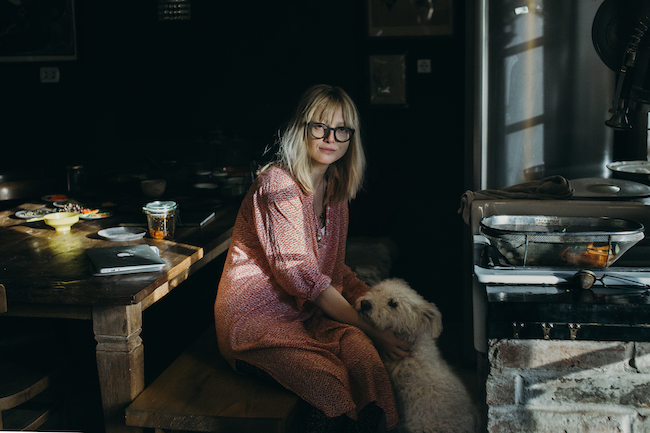
Photo: Alexandra Heim